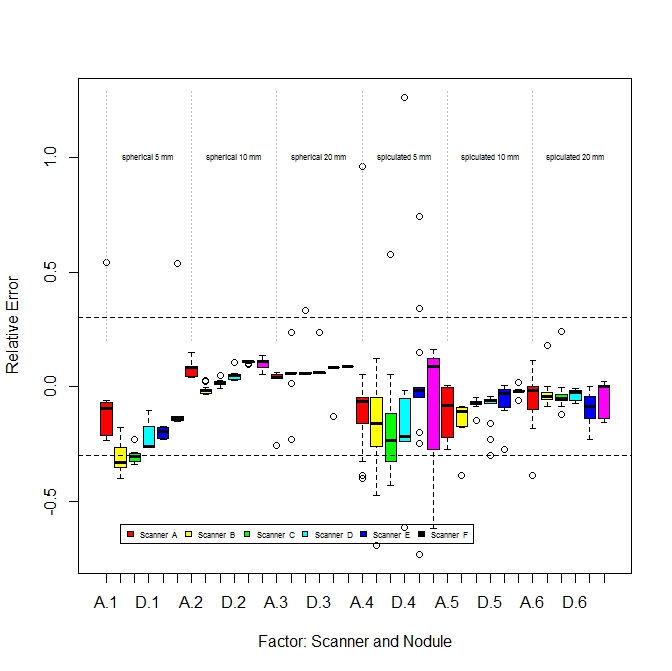Summary
Modern imaging systems produce massive amount of data that can be used to obtain critical 3D information on targeted measurement objects (nodules), including volumes and largest diameter. Statistical analyses and experimental designs of quantitative image analysis experiments are important to understand the measurement variance components due to the various significant factors in the complicated quantitative image measurement process, including PACS (Picture Archiving and Communication Systems), CAD (Computer Assisted Diagnosis using Statistical Learning) as well as scanner settings and human factors due to human reader variation.
Description
In this project, we have gained valuable experience in the emerging area of developing metrology support for medical image decision making, and we have focused mainly in the area of high resolution CT imaging for lung nodules,using both phantoms and clinical data, in the context of RSNA's QIBA(Quantitative Image Biomarker Alliance) framework. We have found that size and shape both play important roles in the measurement uncertainty in phantom and clinical nodule sizing experiments.
Major Accomplishments
The statistical aspects of the project involve developing a brute force graphical approach to analysis of new types of complex experimental data and successfully adapting existing statistical methods /models to the complex nature of translational medical image data. Our specific contributions include the followings.
- Developing novel graphical/quantitative methods for analysis of variance for complex experimental settings;
- Proposing a transformation to compare clinical performance of all three sizing metrics, 1D, 2D, and 3D;
- A proposal for a statistical alternative to RECIST using empirical Bayes variance estimation methods for linear scale metric;
- Developing statistical model for describing the variance of volumetric data as a function of size;
- Developing an equivalence test for multi-scanner/multisite comparison.


